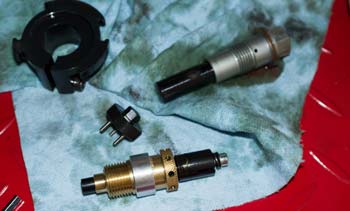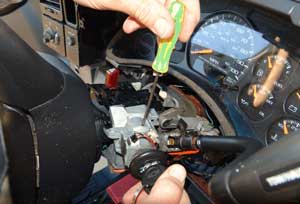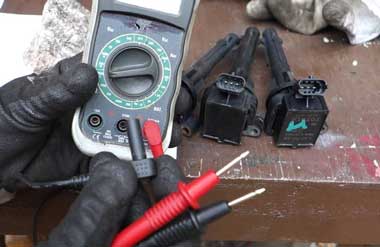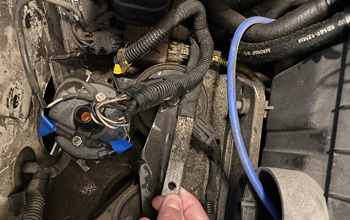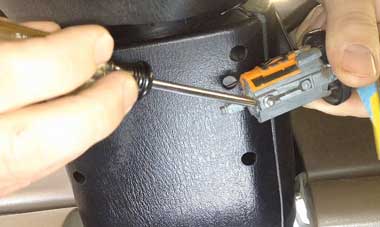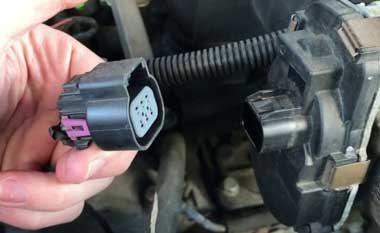Ignition Fuse Keeps Blowing – Diagnosing An Electrical Problem
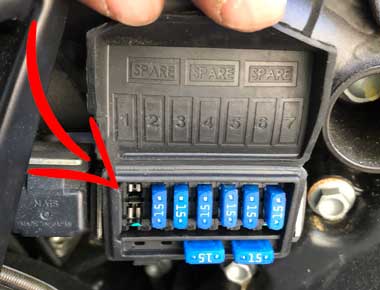
What is the ignition fuse for?
Every fuse does one basic job. Fuses protect the wire or electrical system by restricting the overflow of electricity.
Ignition fuses are more or less the same. These fuses ensure that there is no risk regarding the overflow of electricity in the ignition.
Whenever there is an overflow of electricity, the material of the fuse will start to get melted. In that case, the fuse will be gone, but the whole remaining system will remain protected.
That is why you need an ignition fuse in your vehicle to ensure safety from an overflow of current.
Why does my ignition fuse keep blowing?
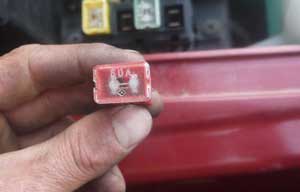
First thing first. You may have come here by searching ignition fuse keeps blowing Chevy, ignition fuse keeps blowing motorcycle, ignition fuse keeps blowing on boat, etc.
Actually, the vehicle model or type doesn’t matter. We think our article will cover all of them. Now, let’s see what the possible reasons for this particular problem are.
The ignition fuse doesn’t always get blown due to problems within the ignition system. Your vehicle’s ignition fuse may get blown due to some other reason too. Let’s have a look at the reasons for the ignition fuse to keep blowing.
1. Ancillary faults
Sometimes your ignition system shares the same power source with cooling fans, starter, fuel pump, power window motor, etc.
In that case, all of them use a common circuit. If anything happens to any of them, you will face problems with the others as well.
Facing ancillary faults is not a good thing. If you are not experienced, you may take a great deal of time to get to the root of the problem.
2. Faults in the wiring or computer
Another reason for the ignition fuse to keep blowing is a fault in the wiring or computer. The wiring can easily get burned due to the hot parts of the engine.
If that is the case, you have to replace the wiring system. In addition, make sure your engine does not get too hot while operating.
If there is fuel injection, an internal short might happen within the computer. If that happens, you won’t have any other choice but throw out the computer and replace it with a new one.
3. Problem in the ignition system
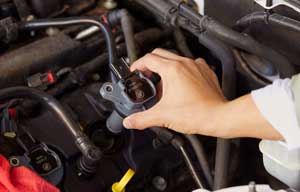
If you are extremely lucky, the reason may be due to an issue in the ignition system. Problems within the ignition system don’t require much effort to solve. Actually, there aren’t many parts in the ignition system.
The ignition switch itself, the wires connected with the ignition switch, or the bad ballast resistor can blow a fuse frequently. So, there’s not much, right?
What happens if ignition fuse is blown?
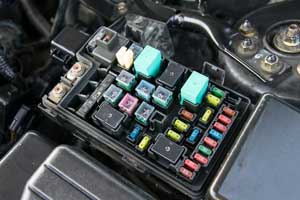
There will be certain outcomes if the ignition fuse gets blown. The most common problem you will face is the problem related to the ignition system itself. Let’s see what happens when the ignition fuse goes bad.
The computer will go bad
In the case of fuel injection, there will be a short within the computer. And if that happens, there will be nothing left to sort out the problem. You will have to replace the entire computer.
The wiring will also become problematic
Several parts in an engine may become too hot and burn the wiring. If this happens, you have to check almost every wiring to get to the root of the problem.
Some other parts will face problems
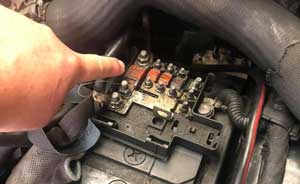
If the ignition fuse shares the same circuit, it will not only affect the ignition fuse in the case of a blown ignition fuse.
You will most likely see problems within the parts also that use the same circuit. The fuel pump or motor may get affected due to a blown ignition fuse.
The ignition system itself will fail
If this happens, consider yourself lucky. Because in this case, you won’t have to roam around to find the core of the problem.
In addition, there aren’t too many parts in an ignition system. You may have to address a bad ballast resistor, or the cables, or the ignition switch.
For this reason, if there is any problem related to the ignition system, you don’t need to worry much.
Ignition Fuse Keeps Blowing – How to Solve This Problem
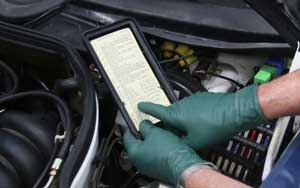
There are so many fuses in a fuse box. And you may know some of them by specific names. For example, you may search for problems like ignition coil fuse keeps blowing, ignition switch fuse keeps blowing, ignition fuel starter fuse keeps blowing, ignition b fuse keeps blowing, etc.
How do you know which fuse we are talking about? This solution covers every fuse problem. You have to pick the faulty fuse, and you are halfway to the solution! Let’s get to the steps then.
Step 1: Cut off the electrical connection
At first, you have to disconnect the connection of the electrical appliances related to the ignition fuse. After that, you have to disconnect the main source of the power of the ignition fuse.
Step 2: Find out the fuse box
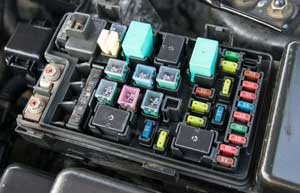
Although most people know where the fuse box is, it doesn’t mean you know the same. You can search for either in the glove compartment or in the engine compartment if you don’t know.
After all of this, if you still can’t find the fuse box, you can see the user manual or search online with the vehicle model.
Step 3: Identify the broken fuse
After you find out the fuse box, you have to inspect the condition of the fuse box. Among the ignition fuses, try to pick up the faulty ones by testing them.
Step 4: Change the fuse
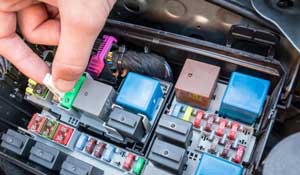
As the old ignition fuse is bad, you have to replace this thing. Otherwise, you won’t have the safety protection for an overload of electricity.
Try to find a fuse that matches the amperage of your old one. By matching the vehicle model, you can buy the fuse on both Amazon (online) and offline stores.
Step 5: Check the new setup
Even if you are sure that the problem was only on the ignition fuse, you should always check the new setup. Because you can always be wrong about it.
We are not hoping for any further issues. But if you face one, try to take your vehicle to one of the repair shops.
Ignition Fuse Keeps Blowing Chevy
This can be caused by damaged wiring, faulty components, or even a buildup of corrosion or dust on the electrical contacts. To find the cause of the short circuit, you’ll need to use a multimeter and ohmmeter to test the electrical components and wiring.
Which fuse controls ignition?
The answer lies in the ignition relay. This is an essential component in a vehicle’s ignition system and is responsible for powering the ignition and ensuring that the engine starts as expected.
How do you test an ignition relay?
- Locate the ignition relay. Your ignition relay is typically located in the engine compartment or near the battery.
- Check the connections. Once you’ve located the ignition relay, you’ll want to check the connections.
- Test the relay. To test the relay, you’ll want to turn the key in the ignition and switch the car to the on position. Then, listen for a click sound. If the ignition relay is functioning properly, the click should be audible.
- Inspect the power source. To test this, turn the key in the ignition and switch the car to the on position. If the starter doesn’t turn, then the power source is faulty.
How do you check ignition power?
Here are a few steps to follow to check the ignition power in your car:
- Check the battery. Use a voltmeter or battery tester to check the voltage and ensure it receives an adequate charge.
- Check the spark plug. A faulty spark plug can cause the engine not to ignite properly. Inspect the spark plug for indications of wear or damage.
- Check the ignition coil. Use an ohmmeter to measure the coil’s resistance and ensure it is within acceptable ranges.
- Check the distributor cap. A faulty distributor cap or rotor can cause a misfire in the engine. Inspect the distributor cap and rotor visually and make sure they are not damaged or worn.
- Check the spark plug wires. If the spark plug wires are loose, damaged, or corroded, the engine might not start. Inspect the spark plug wires for signs of damage and replace them if necessary.
How do you test an ignition switch fuse?
Step 1: Locate the Ignition Switch Fuse
Usually labeled as an “ignition switch,” this fuse is rectangular, with a metal connector on either end and a wire connecting it.
Step 2: Remove the Fuse
Once you’ve located the ignition switch fuse, use a pair of needle-nose pliers to disconnect and remove the fuse from its location.
Step 3: Test the Continuity of the Fuse
To test the continuity of the fuse, you will need to have a multimeter on hand. A multimeter is a handheld device used to test for the presence of electricity.
Step 4: Reinstall the Fuse
Use your needle nose pliers to carefully reconnect the ignition switch fuse in the same location before testing.
Step 5: Restart and Test the Vehicle
Now that you’ve replaced or reinstalled the fuse, it’s time to restart your vehicle and test whether your issue has been addressed.
How do I make my ignition spark stronger?
Always use the right spark plugs and wires for your engine and check on them every few months for any signs of wear.
Also, make sure your fuel filter gets replaced regularly, as a clogged filter can reduce the available fuel for your spark to ignite. Finally, use the appropriate spark timing for your engine and inspect your distributor periodically for any signs of wear.
How do you check an ignition fuse with a multimeter?
Checking an ignition fuse with a multimeter is fairly easy and can be done in the following steps:
- Turn off your car’s engine and wait for all the lights and indicators to turn off.
- Locate the car’s main fuse box and identify the ignition fuse in the box.
- Set up the multimeter to read in volts and clamp the leads onto the spade or ring terminals of the ignition fuse.
- Check the meter for any readings and confirm whether the fuse is good or not.
Note: The voltage readings should be less than 0.5. Anything higher means that the fuse is blown and needs to be replaced.
How do you check a fuse without a tester?
For many of us, it can seem daunting, so here’s a step-by-step guide for checking a fuse without a tester.
1. Gather your supplies.
Your supplies should include a flat-blade screwdriver; needle-nose pliers; replacement fuses; gloves, safety glasses, and contact cleaner to clean any dirt off the fuses.
2. Turn off the circuit breaker.
Before you start any electrical work, turn off the circuit breaker that controls the circuit you are working on to prevent electrocution or injury.
3. Test the fuses.
Use the flat-blade screwdriver to remove the fuses from the fuse box. You may need the needlenose pliers to help remove the fuses, which are often tightly screwed in.
4. Replace the fuses.
If you have identified the blown a fuse, start replacing the faulty fuses. After adding the new fuse, turn on the circuit breaker and test the fuse.
How do you check car fuses without removing them?
Here’s what you need to know about checking your car’s fuses without removing them.
1. Check the Visual Cues
Typically, a blown fuse will appear visibly damaged, such as blackened, little metal slivers or cracks inside the glass. To check the fuse, make sure the car is turned off and unplug it.
2. Use the Light Bulb Method
You can also check your car’s fuses with the help of a light bulb. To do this, unscrew the light bulb, then attach jumper wires to the fuse box.
3. Use a Multi-Meter
A multimeter is a device used for testing voltage and resistance measurements; it’s also handy for testing fuses. To test a car’s fuse with a multimeter, start by connecting the black lead of the multimeter to the negative terminal of the battery.
How do you fix a fuse that keeps blowing?
What if the ignition fuse keeps blowing even after several replacements? What should you do in that case?
First, do the diagnosis all over again. You may find out the real reason for the problem this time. You never know.
If you think everything is alright, now is the time you should give up. You should not carry forward the frustration of replacing the fuse again and again.
Try taking your vehicle to a repair shop this time. Try to go to a recommended shop by your friends and families. The mechanics will do the rest.
Blown ignition fuse symptoms
The following are the symptoms of a blown ignition fuse. If you see one or more of them in your vehicle, you shall start diagnosing.
i. Sudden stall

If the ignition fuse of your vehicle gets blown, you will face sudden stalling in your vehicle. You will have no idea where that comes from and be totally surprised.
ii. Unresponsive ignition
Another symptom of a blown ignition fuse is the ignition will be unresponsive. No matter what you do, the ignition will seem unresponsive. If that happens, try to diagnose the ignition fuse.
iii. Dead battery
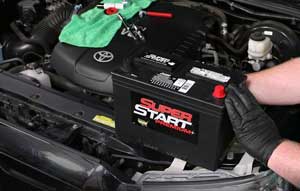
This symptom is very mysterious. Imagine everything is fine with your vehicle. The next day you try to start your vehicle.
You see, the battery is dead. A blown ignition fuse is a reason for this mysterious dead battery incident.
iv. Inconsistent ignition power
If the fuse gets blown, the ignition power will also become inconsistent. You will feel the inconsistency while driving the vehicle. If anything like that happens, don’t bother diagnosing the ignition fuse right away.
Ignition coil fuse location
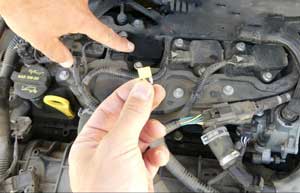
Generally, there are two fuses for the ignition coil. You will find them in the fuse box. The two fuses are fuse no. 23 and fuse no. 33. And for your information, you will find the fuel box in the engine compartment or the glove compartment.
Frequently Asked Question
1. What happens when the ignition fuse goes bad?
You will most likely face problems like sudden stalling, inconsistent power from the ignition, the ignition not responding well, etc.
Generally, you won’t face any start problems. But if you do, you can diagnose the ignition fuse for no start also.
2. What causes a blown ignition fuse?
If there is an electrical overload, the fuse will get blown to protect the vehicle from that overload. So, basically, an overload of electricity causes the problem.
3. Where is the ignition fuse located?
You can find the location of the ignition fuse in two possible places. The first one is in the engine compartment.
If you can’t find the fuse box there, try searching for it in the glove compartment. If you can’t find the fuse there, too, try to look at your vehicle’s user manual.
4. How do you check an ignition fuse?
You can check an ignition fuse whether it is okay or not by using a voltmeter. If you do not hear any sound (beep) after connecting the fuse with the voltmeter or the voltmeter gives an ‘OL’ read, the fuse is blown. Otherwise, the fuse is okay.
Conclusion
We know how it feels to see something not working even after countless trials. People often keep replacing the old ignition fuse with a new one to solve the problem.
But the root of the problem may not lie in the ignition system itself. We have shown in this article that there can be several other reasons for the problem.

